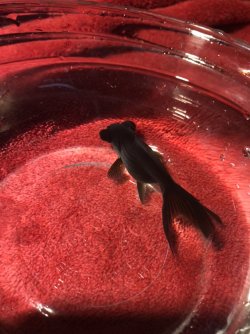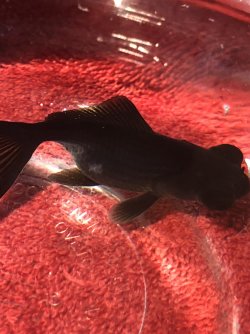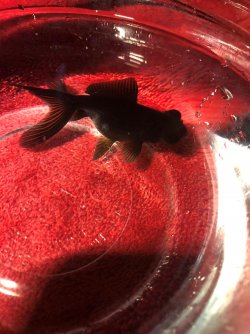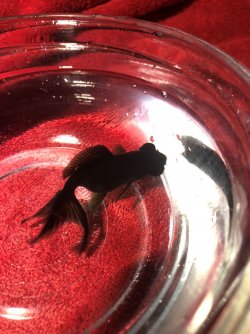whatisacanada
New Member
- Joined
- Dec 6, 2018
- Messages
- 1
- Reaction score
- 0
I purchased a black moor 6 days ago from my local PetSmart to add to my oranda tank, but as I got home from the store I noticed many holes in her fins. I decided to quarantine her and treat with pimafix and melafix.
After 6 days I have noticed no changes in the holes on her fins, and the other day I noticed a rather large white spot on her side. As I was doing a water change today I decided to see if I could get her to swim into a glass bowl so I could get a good look at the spot as her quarantine is a large tub with a filter and bubbler (I did not have an empty tank available for her) and I can't get a good look at her in the tub.
I'm unsure of when the white spot appeared. I don't know if it was smaller when I got her and it has grown or if it has been the same size the entire time because I don't often get a good look at her sides while in the quarantine.
Does anyone know what this spot or the holes could be? Is the pimafix or melafix an acceptable treatment or do I need to be using something else?
After 6 days I have noticed no changes in the holes on her fins, and the other day I noticed a rather large white spot on her side. As I was doing a water change today I decided to see if I could get her to swim into a glass bowl so I could get a good look at the spot as her quarantine is a large tub with a filter and bubbler (I did not have an empty tank available for her) and I can't get a good look at her in the tub.
I'm unsure of when the white spot appeared. I don't know if it was smaller when I got her and it has grown or if it has been the same size the entire time because I don't often get a good look at her sides while in the quarantine.
Does anyone know what this spot or the holes could be? Is the pimafix or melafix an acceptable treatment or do I need to be using something else?





